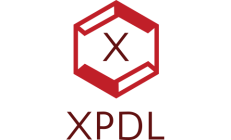Process modeling is a critical component of business process management (BPM) that helps organizations to understand, analyze, and improve their business processes. XPDL (XML Process Definition Language) is a widely used language for modeling business processes. However, modeling processes with XPDL requires a set of best practices to ensure accuracy, consistency, and efficiency. In this blog, we’ll discuss the top tips for successful process modeling using XPDL.
Understand the Business Process
To create an accurate XPDL model, it is crucial to understand the business process you are trying to model thoroughly. Start by identifying the process’s inputs, outputs, tasks, and decision points. Analyze the process flow and ensure that it aligns with the organization’s goals and objectives. Involve stakeholders from different departments to get a comprehensive understanding of the process. By doing so, you can ensure that the XPDL model accurately represents the business process.
Use XPDL Modeling Tools
XPDL modeling tools offer a range of features that simplify the modeling process, making it faster and more efficient. These tools come with pre-built shapes, symbols, and templates that represent the different elements of the process, making it easier to model the process flow. Moreover, these tools allow you to validate the XPDL model to ensure that it is accurate and error-free. Using XPDL modeling tools can help you create an accurate and consistent model while saving time and effort.
Follow XPDL Best Practices
There are several best practices that you should follow when modeling business processes with XPDL. These include using clear and concise language, avoiding redundancies, using standardized naming conventions, and ensuring that the model is easy to read and understand. By following these best practices, you can create an accurate and consistent XPDL model that is easy to maintain and update.
Final Thoughts
Modeling business processes with XPDL requires attention to detail and a set of best practices to ensure accuracy, consistency, and efficiency. By understanding the business process, using XPDL modeling tools, and following best practices, you can create an accurate and consistent XPDL model that meets your organization’s goals and objectives.

